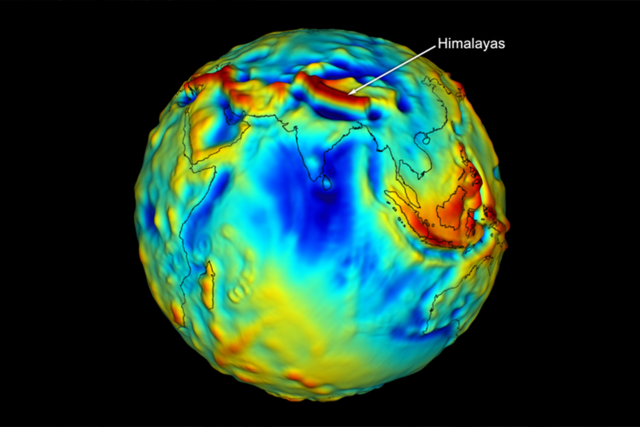Scientists Solved the Mystery of a Gravity Hole in the Indian Ocean

In NBC's La Brea (streaming now on Peacock!), a massive sinkhole opens up at the titular California tar pits, swallowing buildings, vehicles, and a few hundred people. When those folks land at the bottom of the pit, they find themselves delivered to an ancient Lost World filled with prehistoric predators and new dangers around every corner.
In the real world, our own planet has a similar hole in its surface which is admittedly less fantastical, but just as mysterious. The so-called gravity hole in the Indian Ocean has been puzzling scientists for almost a century, but the mystery might finally have been solved, according to a recent paper published in the journal Geophysical Research Letters.
What is a gravity hole?
We tend to think of gravity as one of the few things we can count on to be consistent. No matter where you stand on the Earth, the thinking goes, you're going to experience the same gravitational pull as anyplace else on Earth. Except that isn't true.
RELATED: Dwarf Planet Quaoar Has a Ring System That Defies Our Understanding of Gravity
Gravity is a function of the mass around you, it's the reason Apollo astronauts could bounce around like ping pong balls on the lunar surface. There's more gravity on Earth because the Earth is more massive than the Moon, but mass isn't evenly distributed across the planet, and neither is gravity.
Gravitational maps of the planet (like the one pictured below) reveal areas with more or less gravity. Moreover, the explanation for fluctuations in gravity from place to place mostly makes intuitive sense. Areas with tall mountain ranges, for instance, have a greater share of the planetary mass than low-lying valleys. So, you might expect a stronger pull at the top of a mountain than you would at sea level.
When the opposite happens, a large chunk of mass is moved out of an area, creating what's known as a Geoid Low, the resulting drop in gravity creates what scientists refer to as a gravity hole.
The Indian Ocean Geoid Low
First discovered in 1948, the Indian Ocean Geoid Low (IOGL) covers an area of 3-million square kilometers (1.2-million square miles) approximately 746 miles southwest of India.
Were you to stand there, on a floating platform over the gravity hole, you likely wouldn't notice a substantial difference when compared to standing anyplace else. But on a planetary scale, the drop in gravity over the IOGL is significant and measurable.

Warm colors (red, orange, yellow) represent areas with strong gravity. Cool colors (green, blue) represent areas with weak gravity. Photo: NASA's Goddard Space Flight Center
Lower gravity in the area has resulted in water from the region being blown away in a process not dissimilar to the way low-mass planets lose their atmospheres to space. Consequently, the sea level over the IOGL is roughly 106 meters (348 feet) lower than the global average.
To figure out what caused the Indian Ocean gravity hole, Debanjan Pal and Attreyee Ghosh, both from the Centre for Earth Sciences at the Indian Institute of Science, built 19 computer models simulating the movements and interactions of tectonic plates with the mantle. The idea was to model a bunch of different scenarios and look for ones which most closely match the observed mass distribution.
RELATED: Dwarf planet Quaoar has a ring system that defies our understanding of gravity
Six simulations produced close matches, each of which was triggered by low-density magma rising from below and pushing high-density material away. The formation of Earth's gravity hole goes like this: Roughly 200 million years ago, there was an ancient ocean called Tethys, perched between the supercontinents of Laurasia and Gondwana. When the Indian plate broke away from Gondwana and smashed into the Eurasian plate, a tectonic wrestling match kicked off. Ultimately, the Tethys plates sunk beneath Africa.
That might have been the end of things, but Africa has a hidden secret. Roughly 600 miles from the current location of the gravity hole, lies what's known as the African Blob, a staggeringly large bubble of dense, crystallized material the size of a continent and roughly 1,000 miles thick.
When the Tethys plates slipped beneath the African continent, they disturbed the slumbering blob, sending plumes of fresh low-density magma spilling out. The less dense magma pushed higher-density material down into the Earth, leaving the lighter stuff up top. Let that cook at a couple thousand degrees for a few million years and you get a piping hot gravity hole.
Catch the complete first season of La Brea, streaming now on Peacock!

